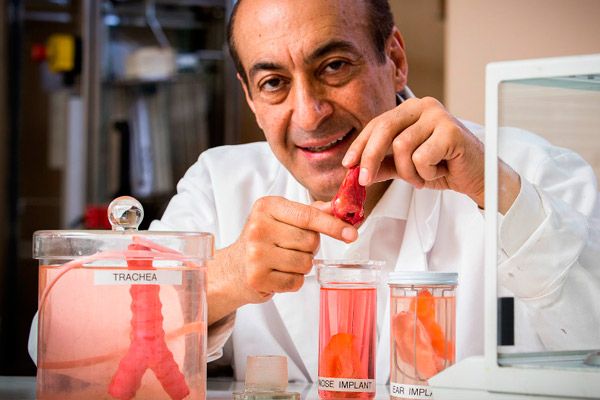New publications
The plants will be used to grow organs
Last reviewed: 02.07.2025

All iLive content is medically reviewed or fact checked to ensure as much factual accuracy as possible.
We have strict sourcing guidelines and only link to reputable media sites, academic research institutions and, whenever possible, medically peer reviewed studies. Note that the numbers in parentheses ([1], [2], etc.) are clickable links to these studies.
If you feel that any of our content is inaccurate, out-of-date, or otherwise questionable, please select it and press Ctrl + Enter.
One of the Canadian laboratories, where scientists are engaged in biophysical manipulations, said that in the near future a technology will appear that will allow organs to be grown for transplantation to humans from plants. This new direction in science is called biohacking and, according to experts, all procedures are carried out without biochemical or genetic interventions.
Lab director Andrew Pelling said he and his team are more interested in studying how cells behave under altered physical conditions than in genetic or biochemical studies.
Professor Pelling and his team have grown an "apple ear" that could hold promise for regenerative medicine when, for one reason or another, defective body parts need to be replaced.
Traditionally, bioengineers have looked at animal organs, particularly pigs, which are similar to humans and can be used as donor organs. But the plant world offers more choice and is less expensive to grow organs.
When creating new organs, one of the main problems was a material that could preserve not only cells, but also the shape and structure of the organ.
Synthetically created organs decompose over time in the body as the framework is replaced by new cells; when using donor organs, foreign cells are also “washed out” of the body until only collagen structures remain, which are subsequently filled with the patient’s own cells.
But both synthetic and donor organs are expensive, and researchers from different countries are constantly looking for an alternative.
Using plants as a basis for creating an organ, according to Pelling's team, is inexpensive and highly compatible with the human body - a mesh of apple tissue implanted under the skin quickly fills with cells and blood vessels, and after about 2 months the plant cells are completely compatible with the body, the immune system does not react to them and does not reject them.
Some of the work of Pelling's team involves genetic manipulation, where scientists actively work with cells - pushing them, stretching them, placing them in different containers and observing the behavior of the cells. By the way, studying cells under certain conditions can change the therapy of complex limb paralysis.
Experts noted that capillaries in asparagus can be used to restore the spinal cord, and rose petals are suitable for skin grafting. As experiments have shown, plant fiber is not destroyed in the body, unlike implants.
Professor Pelling's work has greatly expanded the toolbox and opened up new possibilities for everyone working in molecular medicine, according to one Harvard biomaterials expert.

In Europe, GMOs are viewed extremely negatively, while in Canada, where Pelling's lab is located, the attitude is more tolerant. In Canada, Pelling's work is supported, but like any new research, biohacking must undergo a series of tests before it receives regulatory approval.
It is worth noting that Pelling's laboratory is open, and those interested can suggest their own experiments via Twitter; the team of scientists also suggests repeating some of the experiments at home using available materials and household items.

 [
[